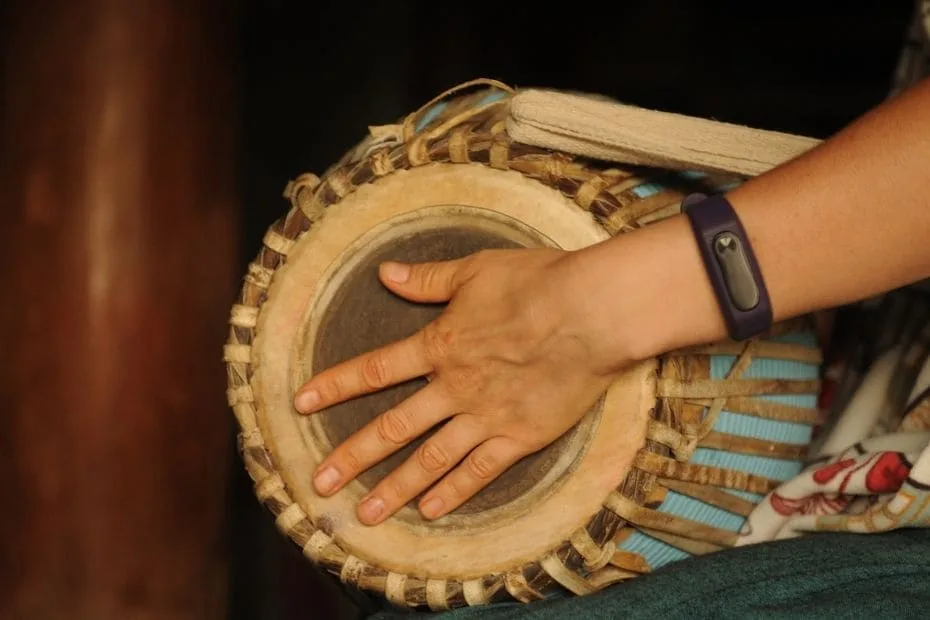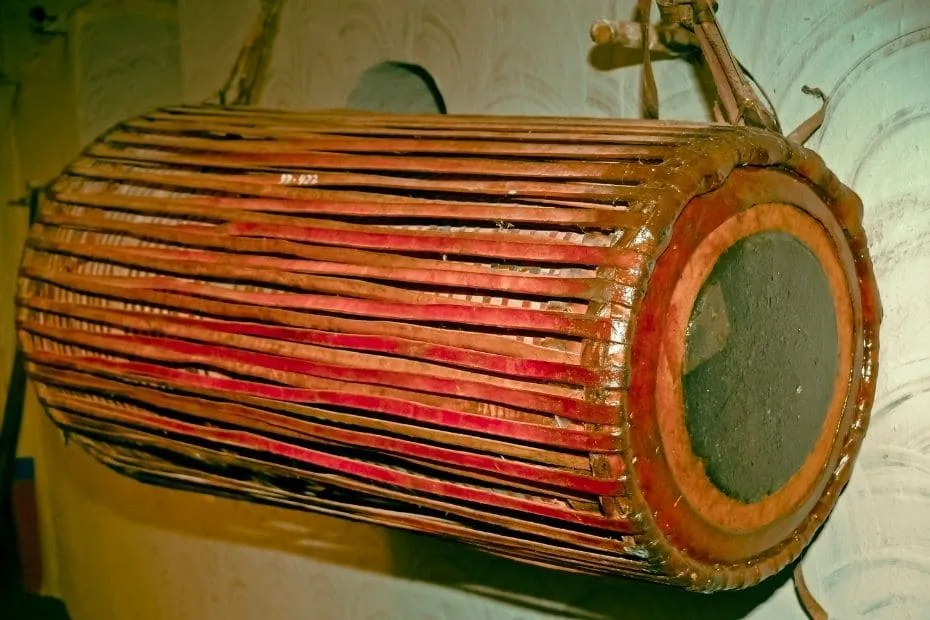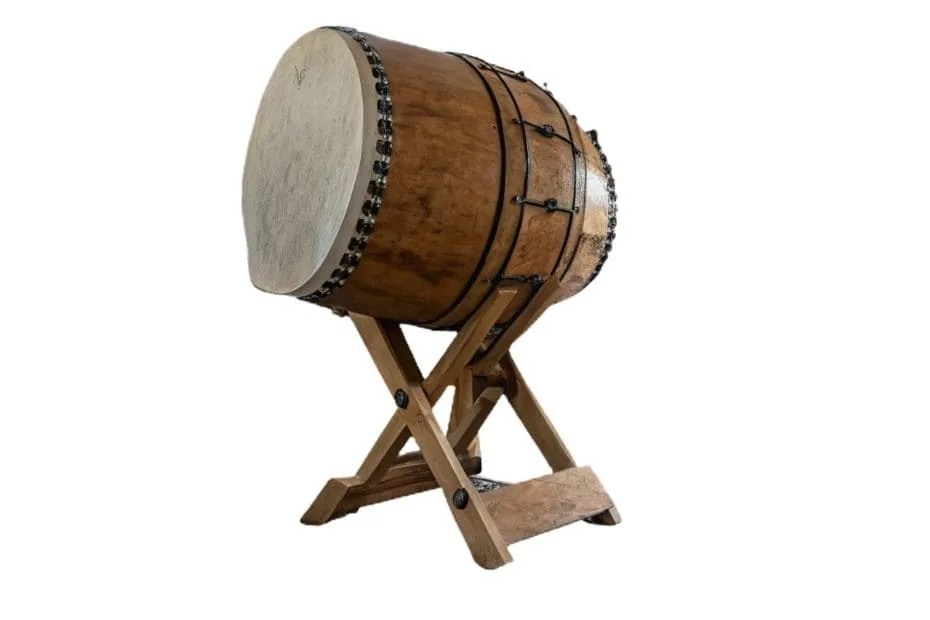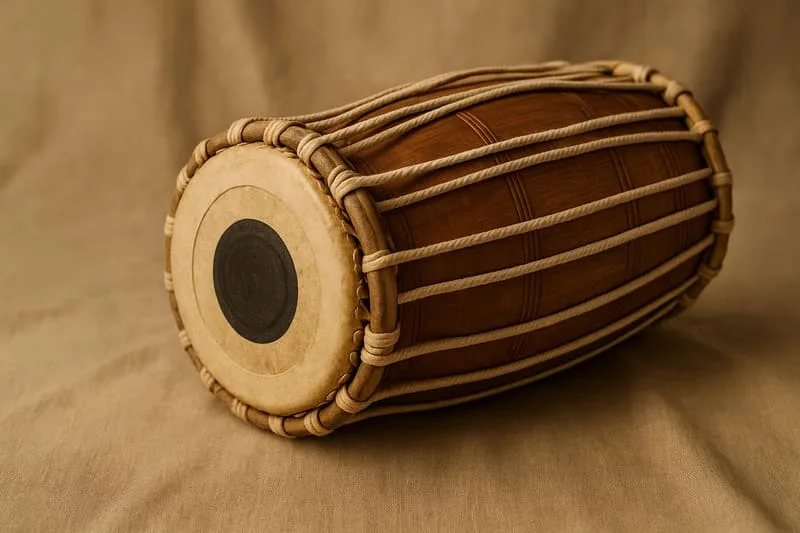The mridangam is the iconic double-headed drum of South India—an instrument that doesn’t merely keep time, but breathes life into the rhythmic architecture of Carnatic music and classical dance. Handcrafted from resonant hardwood and tuned with meticulous care, the mridangam delivers a rich palette of tones, from sparkling treble to deep, bending bass. Whether you’re a student picking your first drum or a professional refining your sound, understanding its design, technique, and care will transform how you hear and play this legendary instrument.
| Feature | Details |
|---|---|
| Origin & Genre | South India; central to Carnatic concerts and Bharatanatyam dance |
| Body Wood | Jackwood (traditional), occasionally other hardwoods |
| Length | 22–24 in (≈ 56–61 cm) |
| Head Diameters | Treble (valantalai): 6.5–7.5 in; Bass (thoppi): 8–9 in |
| Weight | 6–10 kg depending on wood and size |
| Tuning | To tonic (śruti) of main artist; wedges adjust tension; bass uses temporary paste (sem) |
| Right-Head Loading | Permanent black spot (karanai/soru) for clarity and sustain |
| Typical Use | Concert accompaniment, solo tani āvartanam, dance, bhajans |
| Skill Levels | From beginner to concert professional; graded sizes and builds available |
What Makes the Mridangam Unique?
Unlike many frame drums or hand drums, the mridangam is a barrel-shaped, double-headed instrument with distinct voices on each side. The treble head (right) sings with crisp, brilliant tones thanks to the karanai—a layered, iron-rich black spot that fine-tunes overtones and adds sustain. The bass head (left) is broader and, crucially, uses a removable dough-like paste called sem (often rice/wheat flour with water) to yield that iconic, pliable low end and dramatic pitch bends known as gumki.
The shell is traditionally carved from jackwood for an ideal balance of projection, warmth, and durability. Natural hide heads (commonly goat) are laced with leather straps, and tuning is done via wooden wedges placed along the circumference—simple in principle, subtle in practice.
A Short History and Role in Carnatic Music
References to double-headed drums in India reach back millennia, and the mridangam has evolved into the principal timekeeper of Carnatic ensembles. In concerts, the mridangist converses with melodic artists, articulating the structure of tāla cycles—like Adi, Rupaka, or Khanda Chapu—and shaping energy through rolls, strokes, and silence. Solo sections, the breathtaking tani āvartanam, demonstrate technical virtuosity and the deep vocabulary of sollukattu (spoken rhythmic syllables). Legendary exponents such as Palghat Mani Iyer, Palani Subramania Pillai, Umayalpuram K. Sivaraman, Trichy Sankaran, and Guruvayur Dorai set benchmarks for tone, phrasing, and tradition.
Construction: Materials, Heads, and the Science of Tone
- Shell: Dense, resonant jackwood is preferred for stability and tone. Thickness and taper influence projection and warmth.
- Heads: Multi-layered natural skins. The right head’s karanai focuses harmonics, giving unmistakable clarity for fast passages and korvais.
- Lacing & Hoops: Leather straps connect both heads, distributing tension evenly. The hoops must be well-rounded for comfort and tuning accuracy.
- Finishes: Traditional wax or oil protects the shell. Quality finishing helps resist humidity shifts and preserves sustain.
Sound & Technique: From Sparkle to Thunder
Mridangam technique blends finger articulation, wrist control, and palm pressure to unlock a vast tonal spectrum. Fundamental syllables—often taught as Tha Dhi Thom Nam and their variants—map to strokes that are struck, damped, or allowed to ring. On the bass side, controlled pressure and gumki sweeps craft expressive bends; on the treble side, precision strokes create sparkling phrases that dovetail with the vocalist or violinist’s ornamentation.

Tuning and Everyday Care
- Setting Pitch: Tune the right head to the lead artist’s tonic (śruti), commonly in the range of C–E for many settings. Adjust with wooden wedges; small taps raise pitch, releasing lowers it.
- Bass Prep: Apply sem to the center of the left head shortly before playing. Thickness controls depth and length of bass response.
- Climate Care: Avoid extremes of heat or humidity. Loosen tension slightly for storage if conditions vary; use a soft cover and store the drum horizontally on a padded surface.
- Leather Health: Periodically condition the rim leather lightly (sparingly) and keep heads clean and dry. Never overheat; gentle warming can brighten tone but risks damage if overdone.
How to Choose the Right Mridangam
Size, Feel, and Comfort
For many learners, a shell length around 22 in (56 cm) with a moderately weighted build offers control and manageable carry weight. Advanced players may prefer slightly larger shells for expanded bass response. Ensure the treble head sits comfortably under your right hand and the bass head allows clean, responsive gumki.
Wood and Weight
Jackwood remains the gold standard for a reason: balanced overtone content, projection, and durability. Heavier shells can deliver powerful lows but may fatigue the player during long performances. Seek a lively, even response across dynamics rather than sheer volume alone.
Craftsmanship Checklist
- Roundness & Seating: Heads should seat evenly; no gaps between hoop and shell.
- Karanai Quality: Smooth, centered, and well-adhered for clean treble articulation.
- Lacing Integrity: Even strap tension, quality leather, and secure knots.
- Wedge Fit: Wedges should engage cleanly without slippage and allow fine adjustments.
- Test Drive: Play soft-to-loud phrases, fast rolls, and bass bends. Listen for clarity, sustain, and a coherent “note.”
Recording and Live Sound Tips
- Stage Miking: Place a small-diaphragm condenser 10–15 cm off the treble head, angled to avoid air blasts. Use a dynamic or another condenser 15–20 cm from the bass head for body and gumki.
- Phase & Balance: Check polarity between mics; blend for sparkle and warmth. A gentle high-pass on the treble mic can reduce handling rumble.
- Studio Approach: Room mics capture the mridangam’s bloom. Add a subtle compressor (2:1) to even dynamics without squashing transients.
- Monitors: Keep stage monitors modest to avoid feedback and preserve natural tone.
Learning Pathway: From Sollukattu to Tani
Start with clean posture and hand positions, then build a vocabulary of sollukattu—syllables like Tha, Dhi, Thom, Nam—and practice in core tālas such as Adi and Rupaka. Develop even tone, controlled resonance, and phrasing that breathes with the melody. Over time, you’ll build the confidence to craft korvais and explore the art of the tani āvartanam.
Common Questions
What pitch should I tune to?
Match the main artist’s tonic (śruti). Many players carry a reference (shruti box/app) and fine-tune the right head with wedges. The left head is shaped with sem just before performance.
How long do heads last?
With regular care and moderate climate, heads can last years. Frequency of use, humidity, and tuning habits play a role. Replace when you notice persistent loss of clarity, uneven response, or damage to the karanai.
Beginner or professional build?
Beginners benefit from a lighter 22-inch drum with stable tuning. Professionals often seek customized shells, premium skins, and meticulously voiced karanai for projection and nuance.
Final Beat
The mridangam is more than an instrument; it’s a living conversation between rhythm, melody, and space. Choose carefully, care for it diligently, and study its language—your reward is a drum that can whisper with elegance, sing with precision, and thunder with soul.



